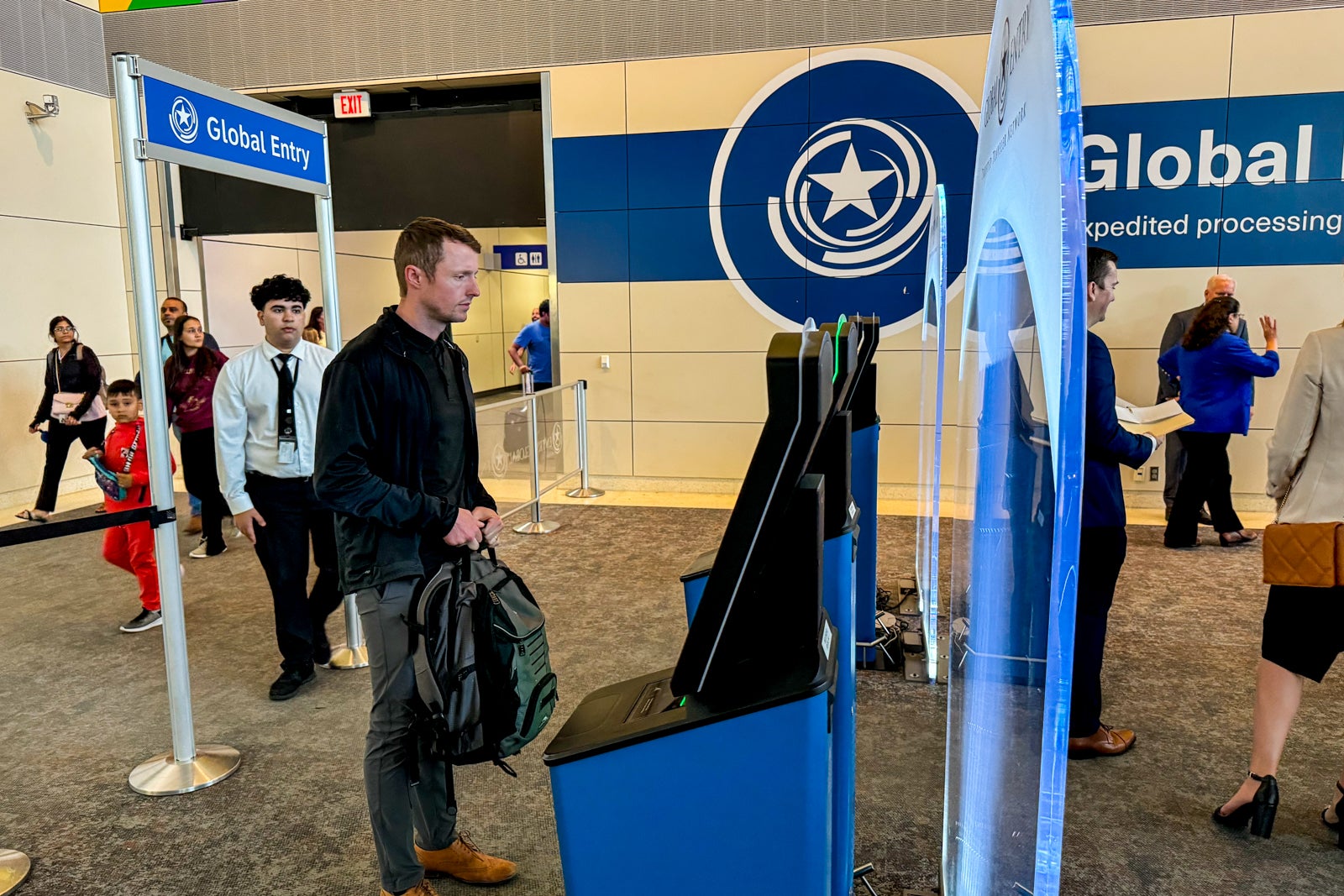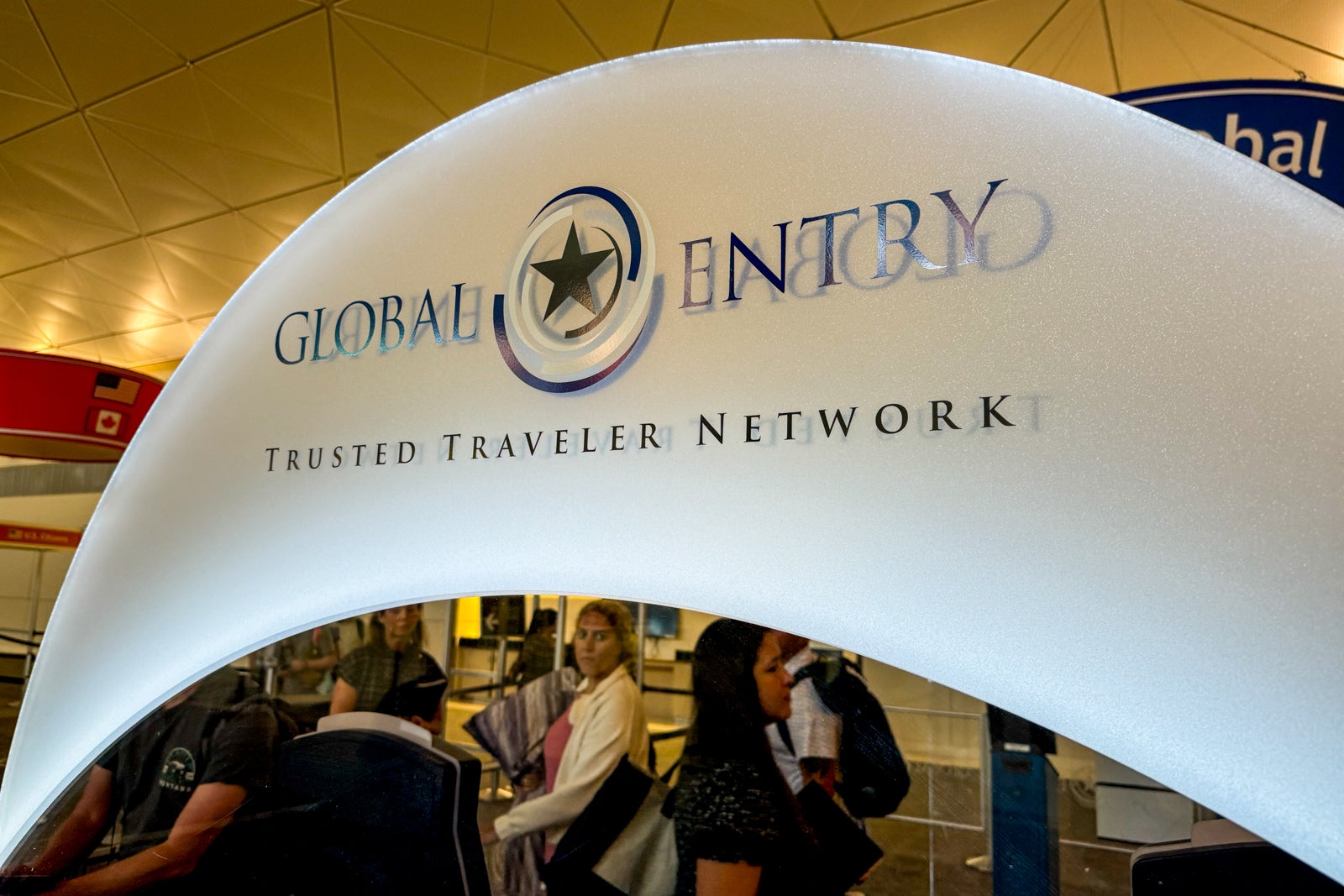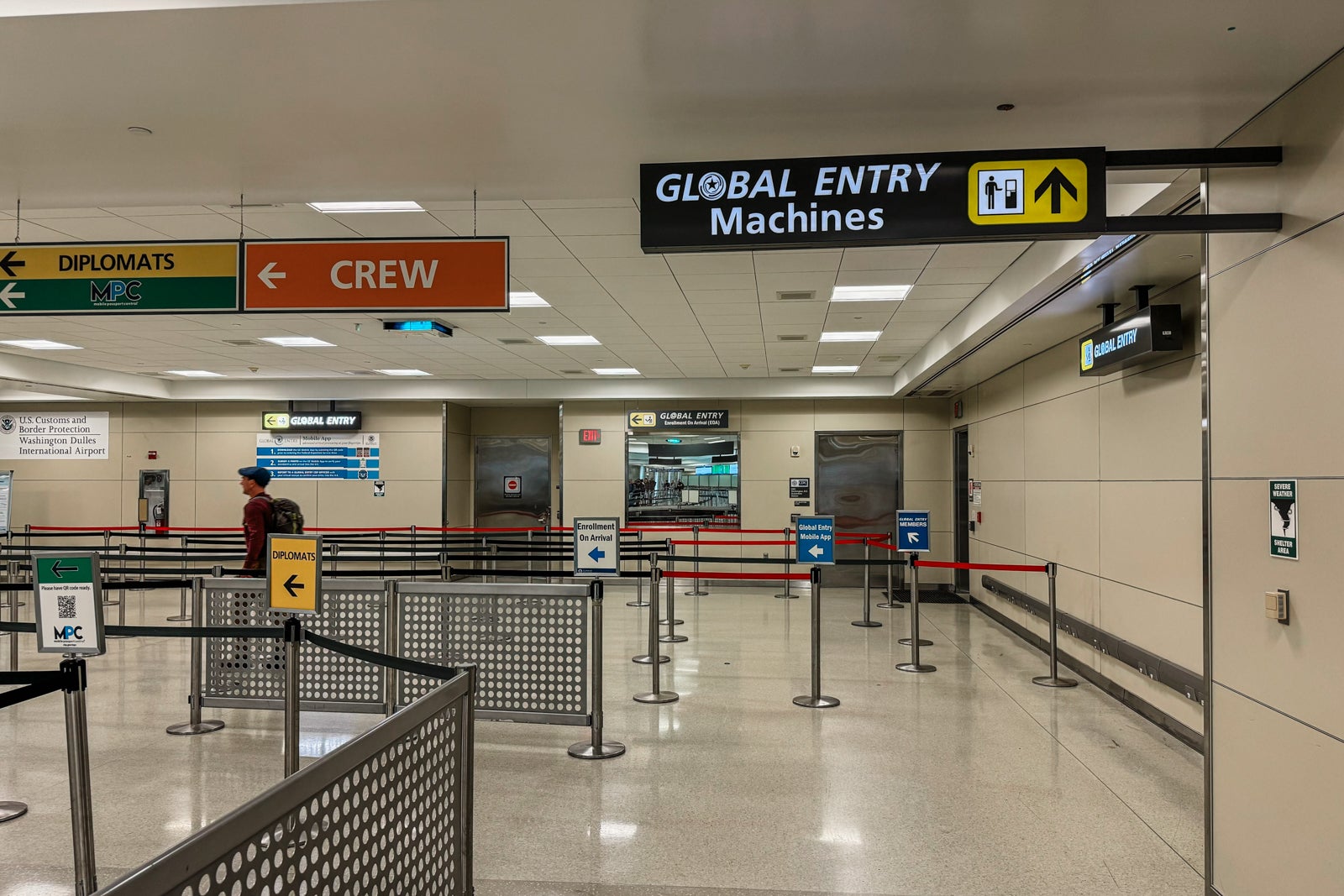Global Entry is about to get a lot faster at some of the nation’s largest airports.
U.S. Customs and Border Protection is trialing new “on-the-move” camera technology that could allow passengers to skip the signature blue kiosks and exit passport control without ever breaking a stride.
The new process, known as “Seamless Border Entry (or SBE),” is already in place at seven North American airports that offer Global Entry — many of them the continent’s biggest international hubs.
“The goal for the trusted traveler is really to walk through and not stop at all,” Diane Sabatino, CBP acting executive assistant commissioner, told me in an interview last week.
How Global Entry saves time
Global Entry is already one of the best time-savers available to frequent travelers.
The program gives members access to fast-tracked lanes at passport control, where kiosks use a quick biometric scan to verify the traveler’s identity in a matter of seconds. Then, the traveler proceeds to an officer for a quick secondary verification. It’s an entirely touchless process that’s itself an upgrade from several years ago, when members had to take a printed ticket to an officer before clearing passport control.
Read more: 8 ways to get free or discounted TSA PreCheck, Global Entry and Clear
In seven years as a Global Entry member, I’ve rarely waited more than a few minutes at any airport. That said, fast growth in the program and an overall spike, in recent years, in international travel can trigger backups during peak periods.
Seamless Border Entry
I experienced the new Seamless Border Entry (or “SBE”) process earlier this spring at Miami International Airport (MIA), and it was demonstrably faster than even the least-crowded Global Entry experience I’ve ever had.

Daily Newsletter
Reward your inbox with the TPG Daily newsletter
Join over 700,000 readers for breaking news, in-depth guides and exclusive deals from TPG’s experts
Because of the so-called “auto-capture” technology the new setup uses, I didn’t have to stop at a kiosk to have my face scanned; a camera in a box right next to an officer cleared me while I was mid-stride, and I was able to proceed to baggage claim without ever stopping.
Similar technology is currently in place at a handful of other major international airports:
- Chicago’s O’Hare International Airport (ORD)
- Houston’s George Bush Intercontinental Airport (IAH)
- Los Angeles International Airport (LAX)
- Newark Liberty International Airport (YYZ)
- Toronto Pearson International Airport (YYZ), where travelers are cleared prior to returning to the U.S.
- Washington’s Dulles International Airport (IAD)
SBE will debut this week, TPG has learned, at Hartsfield-Jackson Atlanta International Airport (ATL).
A program that’s still evolving
Yet, the program remains in a pilot phase, of sorts, with CBP still working to identify a vendor it could partner with to expand the program more broadly.
That could include an even more technologically advanced concept the agency predicts will start showing up at airports by next year.
“What we’re really looking for that is to really make it seamless, on the move, so it’s not really even stopping at a portal, or a place where there’s a camera. To literally have cameras embedded into the infrastructure of the walkway,” Matt Davies, CBP executive director for admissibility and passenger programs, explained.
For passengers with privacy concerns, note that that CBP historically has used photos taken at airport passport control centers for comparison with images already on file, like a passport or visa photo.
Whatever happened to the ‘e-gates?’
The emergence of this more advanced technology is also a key reason CBP decided not to move forward with trying out new “e-gates” like those found at some major overseas airport.
Last spring, I reported the agency was preparing to trial automated gates for members passing through passport control at Dulles, outside Washington. But CBP later backtracked on those plans.
Long story short, the agency felt like it found a better, quicker option.
“I think what we see,” Davis explained, “…is that there’s a way for us to incorporate security into our process without having the impediment of a gate that can sometimes have a jerkiness to the [passenger] flow.”
Bottom line
Whether you’re visiting an airport with the new SBE technology or not, Global Entry offers enormous time-saving potential after a long, international flight.
The program costs $120 for a five-year membership, and comes with access to the TSA PreCheck lanes. Some credit cards will reimburse the application fee.
This technological upgrade for Global Entry comes as CBP is adding new ways for U.S. travelers to move through passport control more quickly. That includes a new biometric option for travelers who aren’t a member of any Trusted Traveler Program.
Related reading:














